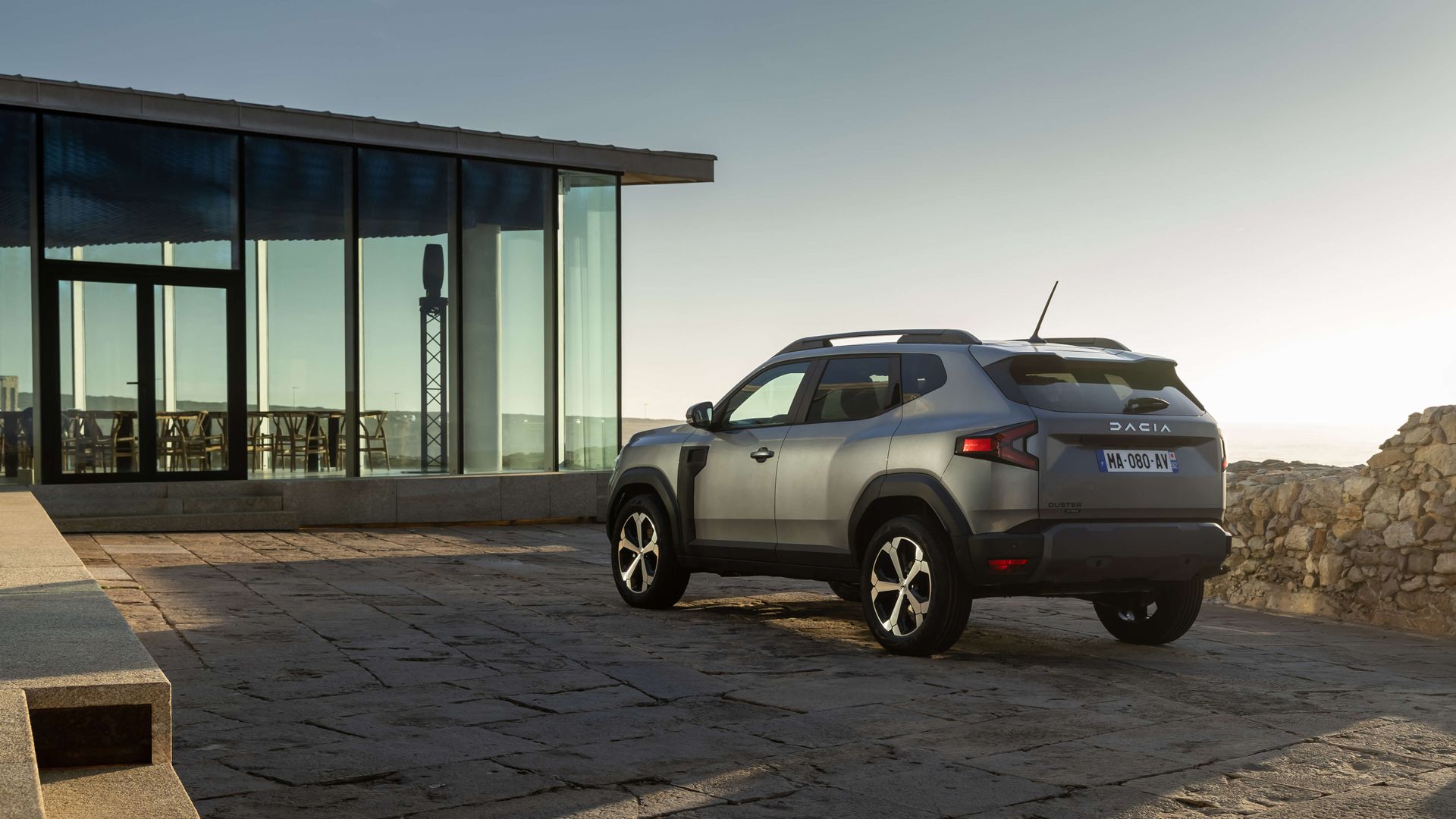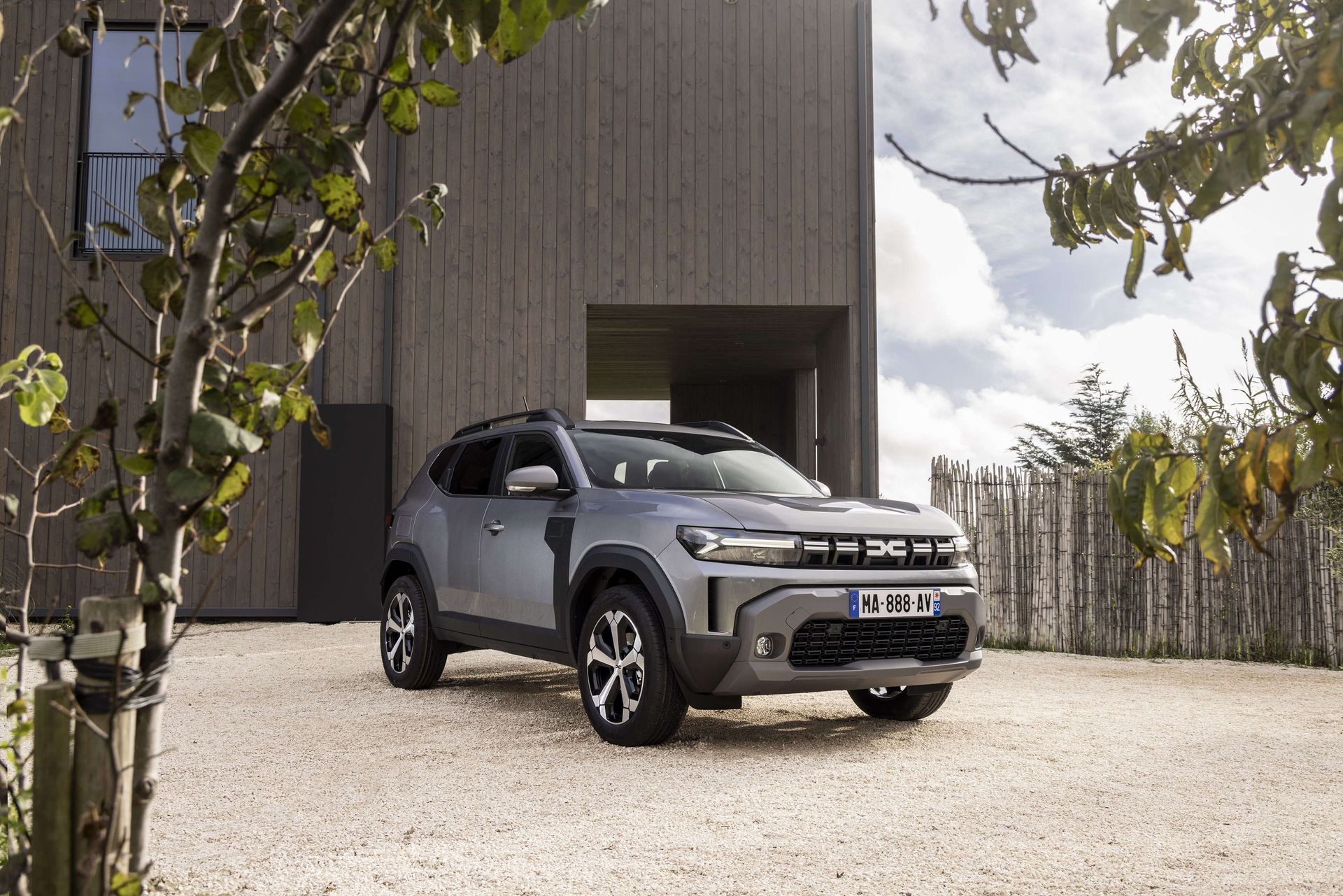Why the new Dacia Duster SUV is simply ‘enough’
The Dacia Duster SUV is proof that in an age of dwindling natural resources, the concept of a product being ‘enough’ – even if customers can afford more – is gaining currency

The third generation of the Dacia Duster, revealed in very late 2023, is a great automotive example of ‘enough’. It offers a no-nonsense, robust and utilitarian design at a very reasonable price, while still functioning as an appealing piece of sculpture, equally at home in the city or the countryside.

‘We have new customers from higher-range cars, that can afford more expensive cars,’ says Dacia’s French design director David Durand, ‘but they are considering us as they’re not sure if it makes sense to put so much money into a car which could just get stuck in traffic. However, even if they are ready to be more “essential”, there are some things they really want. So we have to consider comfort, details, textiles and finishes. It’s new for us.’

The Duster’s stellar success certainly is new territory for Dacia. From an under-the-radar start back in 2010, the small-but-chunky model has sold 2.2 million units and is well on its way to becoming an icon for the Renault Group, which has owned the Romanian brand since 1999. In two model generations the Duster has transformed market perceptions from just being a poor-man’s car, to an ‘everyman, go anywhere choice’, somewhat akin to a modern-day Fiat Panda 4x4.
Dacia Duster SUV

The Mk3 Duster sits on new underpinnings able to accommodate petrol-electric hybrid engine options and its designers have made only subtle proportional changes to keep the design ‘fresh enough’ for another generation. As Durand continues: ‘Talking to customers they said, “Don’t touch it too much!” We have the [bigger] Bigster model arriving in a year, so it was easy for us not to increase everything, like is so often the case with model replacements, which are longer, higher and more of “this” and “that”. We chose to [broadly] keep the dimensions of the last generation, because we understood it was the perfect compromise between roominess and a big boot, but still compact and practical.’

The Mk3 Duster is a similar length as before (4.34m) but has a slightly wider track and lower roofline. Above the first-row passengers, the ceiling height has reduced by 10mm and at the rear by 50mm. According to Durand, this slightly reduces rearward driver vision but makes a huge improvement in aerodynamics and thus fuel consumption, while also managing to boost boot capacity (up 6 per cent to 472 litres).
Ground clearance is reduced by 8mm on the two-wheel drive model, which also sports energy-saving tyres to improve CO2 efficiency, while the approach and departure angles on the underside of the four-wheel drive version are greater to make the car better able to navigate ruts, rocks and rivers. As Durand states firmly: 'The Duster is not a crossover, it’s a real SUV.'

While that capability stops short of a low-ratio gearbox associated with only the most serious off-roaders, it is nonetheless a versatile vehicle and better-looking than ever in Mk3 guise. The new model has a more horizontal and visually longer bonnet and higher beltline to make the car look more robust and well-balanced and its front face is more vertical compared to the Mk2. This has a practical benefit as well, allowing the driver to see the edges of the vehicle better while driving.
The much-improved interior is more visually consistent with the exterior – see the repeated Y shapes for graphic proof – and offers an innovative fixing point system called YouClip. It can be employed in multiple locations inside the Duster to fix a phone cradle by the central screen, hook a bag to the passenger side of the centre console, or even a coat to the open tailgate edge, perhaps when changing after an outdoor adventure.

There’s more sustainable and overt content in the Duster too. A speckled material called ‘Starkle’ containing 20 per cent recycled plastic and remaining unpainted to show off its contents, is used to protect the car’s lower front, side and back edges. It’s another example of ‘enough’ and could well be.
On sale from early 2024, the Duster is expected to start from circa £18,000.

Wallpaper* Newsletter
Receive our daily digest of inspiration, escapism and design stories from around the world direct to your inbox
Guy Bird is a London-based writer, editor and consultant specialising in cars and car design, but also covers aviation, architecture, street art, sneakers and music. His journalistic experience spans more than 25 years in the UK and global industry. See more at www.guybird.com
-
 Snailed it: Jessica McCormack and the Haas Brothers’ playful jewellery
Snailed it: Jessica McCormack and the Haas Brothers’ playful jewelleryJessica McCormack and the Haas Brothers give a second jewellery collaboration a swirl
By Hannah Silver Published
-
 Iné in Hampstead is a Japanese restaurant with a contemporary touch
Iné in Hampstead is a Japanese restaurant with a contemporary touchIné in London's Hampstead reflects edomae traditions, offering counter omakase and à la carte dining in a minimalist, contemporary setting
By Ellie Stathaki Published
-
 Jonathan Baldock’s playful works bring joy to Yorkshire Sculpture Park
Jonathan Baldock’s playful works bring joy to Yorkshire Sculpture ParkJonathan Baldock mischievously considers history and myths in ‘Touch Wood’ at Yorkshire Sculpture Park
By Anne Soward Published


